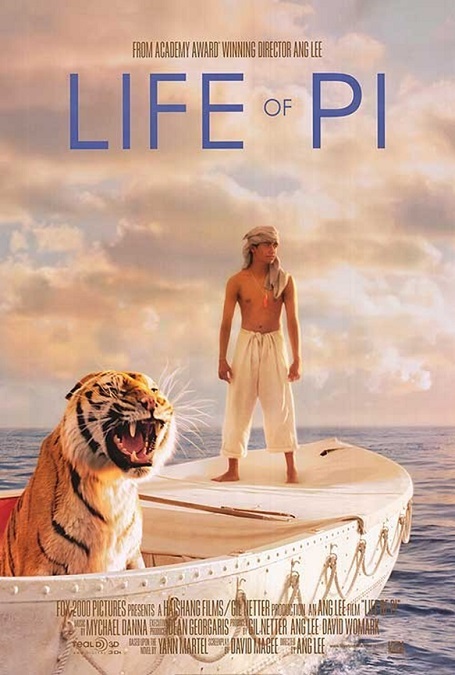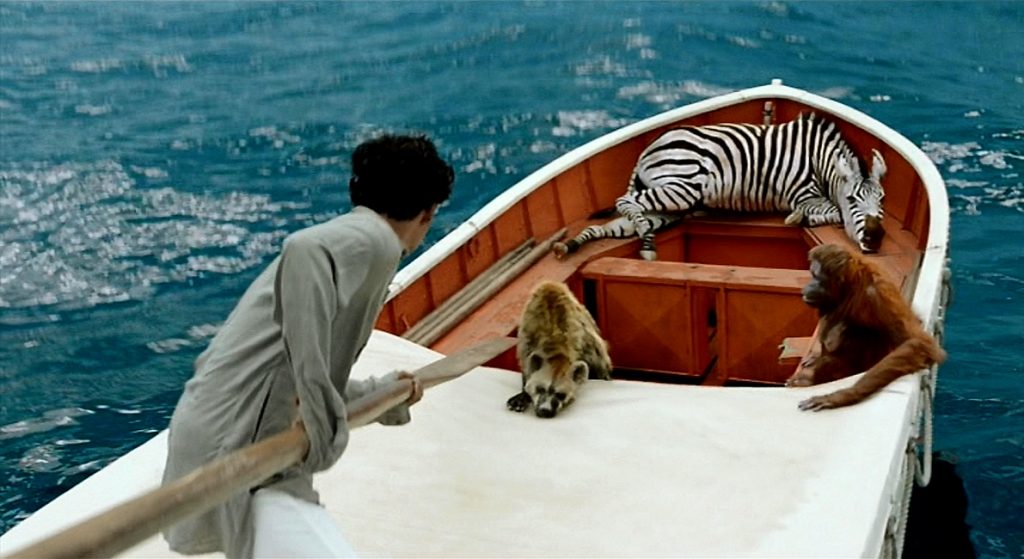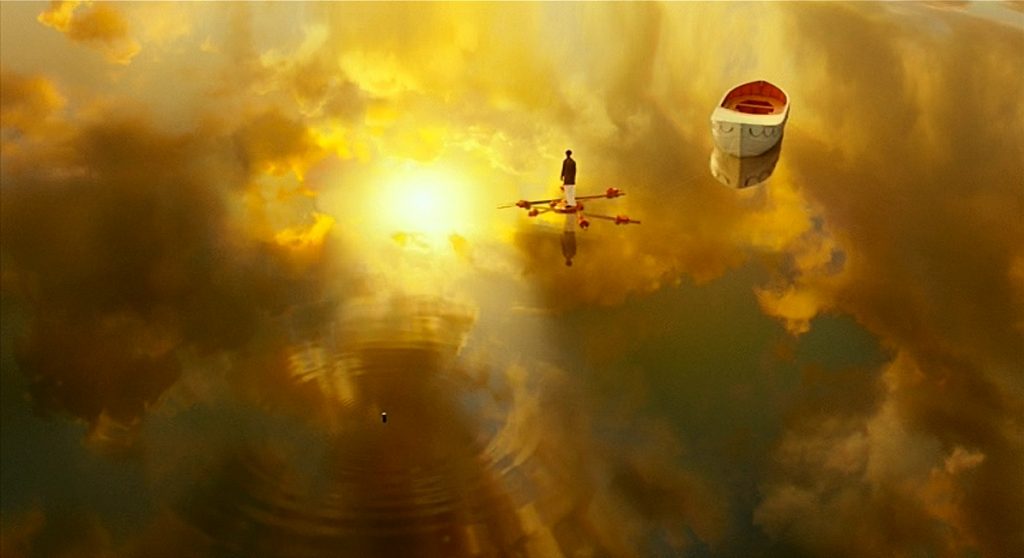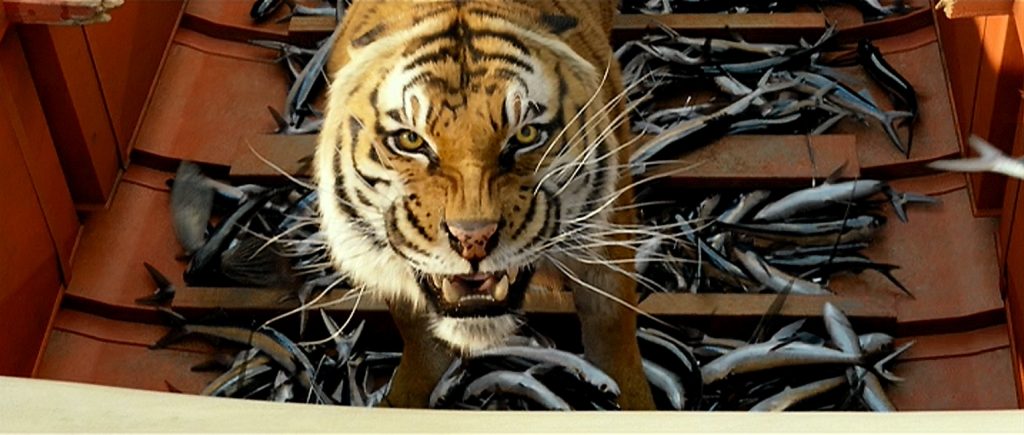



Life of Pi – 2012 (WINNER)

This is one of those Best Visual Effects winners for which it doesn’t matter what other movies it was up against. I completely agree with the Academy’s decision. It would have been wrong if it had not taken home the top prize. The visuals for this film were beyond amazing. The effects ranged from the realistic, like flawless composited backgrounds, to absolutely photo-realistic CGI, to magically colorful fantasy imagery, all of which combined to create an incredible visual experience.
Of course, the effect that really earned the movie its Oscar was the tiger. It is important to point out that the character of the tiger was there throughout most of the movie. It was one of the lead characters. And according to a short documentary I found on YouTube, only 25 shots in the entire film contained a real tiger. Every other shot of the tiger was completely CGI. The thing is, even a live tiger trainer, Thierry Le Portier, who was used as a consultant on the movie, could not tell the difference between which shots were real, and which ones were not. I certainly couldn’t. That’s how good the animated animal was.
And for me, it wasn’t just how it looked that sold the imagery for me. It was the movement. As a cat, tigers have that innate, feline way of moving that is graceful and fluid. The way this CGI tiger moved was just as life-like as any tiger I’ve seen on film or in a zoo. The character’s realism was simply was amazing. Le Portier coached the animators on how real tigers thought and behaved, and how their movements reflected their emotions and intentions, adding an important layer of realism to the character. The result was phenomenal!
But it was more than just the tiger. There was also a zebra, an orangutang, a hyena, and a ton of meerkats. And like the tiger, their photo-realism was uncanny, though they didn’t have as much screen time. The way they moved never once gave away their digital nature. The documentary also mentioned that 7 shots containing the hyena were real, and none of the orangutan were real. I call that pretty impressive, and worthy of the Oscar win.
Another amazing effect was the ocean itself. Not a single shot of the movie was filmed on the ocean, though 80% of the story took place in the middle of the Pacific. It was all filmed in a wave-pool, built on a sound stage. The film’s director Ang Lee, stated that the ocean was a character in the film. It appeared to have its own emotions and moods, and a life of its own. There were constant normal ocean waves, violent storms, and calms so profound that it was impossible to tell the water from the sky. It made for some stunningly beautiful imagery.
And that’s what made the visual effects for Life of Pi stand out. The film was not just a great story. It was a work of visual art, which was one of Lee’s goals when making the film, and I believe he succeeded. It was a beautifully filmed movie, one in which the fantasy elements were indistinguishable from the realistic elements. Every time I watch the movie, I am more impressed by what I see on the screen.